During lockdown (with very little but time on my hands), I took the opportunity to branch out from my beloved British rag rug techniques and teach myself how to twine.
Twine? What on earth is that?
Well, rug twining is a popular form of rag rug making in America. Like our traditional British techniques, twined rugs are made using scraps, and oddments, but that’s where the similarities end. Twined rugs are made using a basic loom and don’t use any hessian whatsoever.
The appearance of twined rugs is also very different. They have a somewhat flat, plaited appearance (although they’re not plaited), as you can see from the examples below…
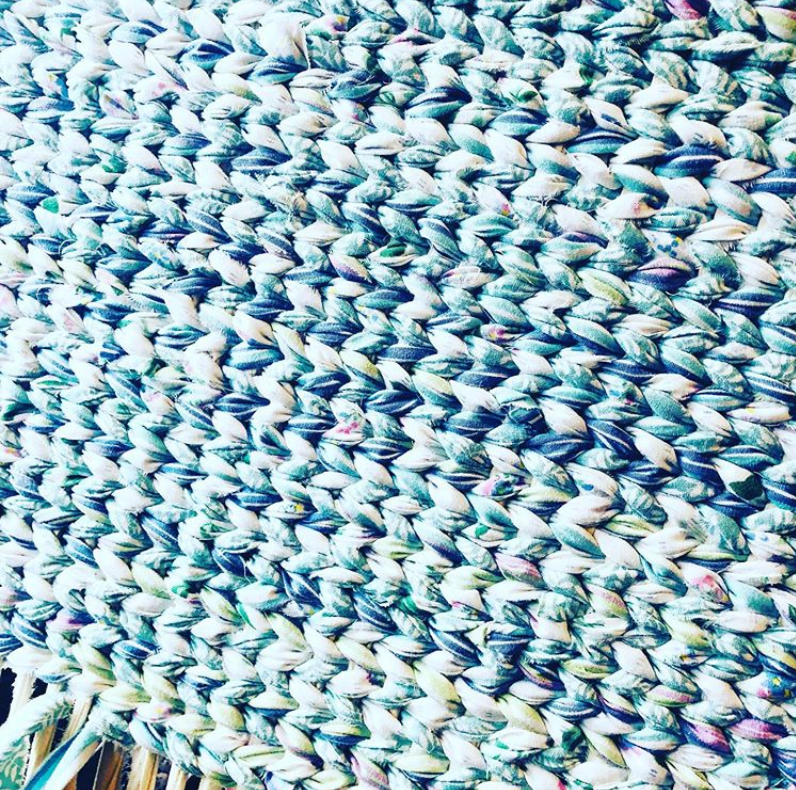
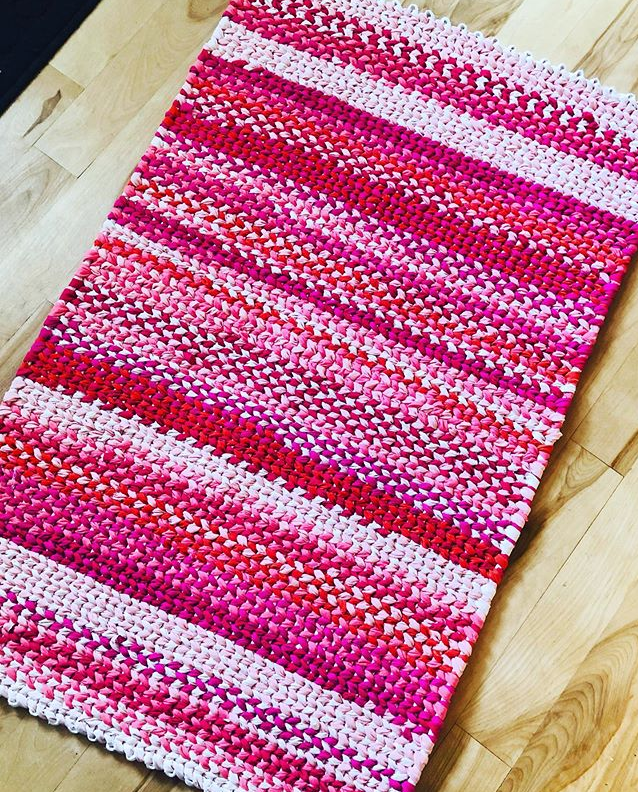
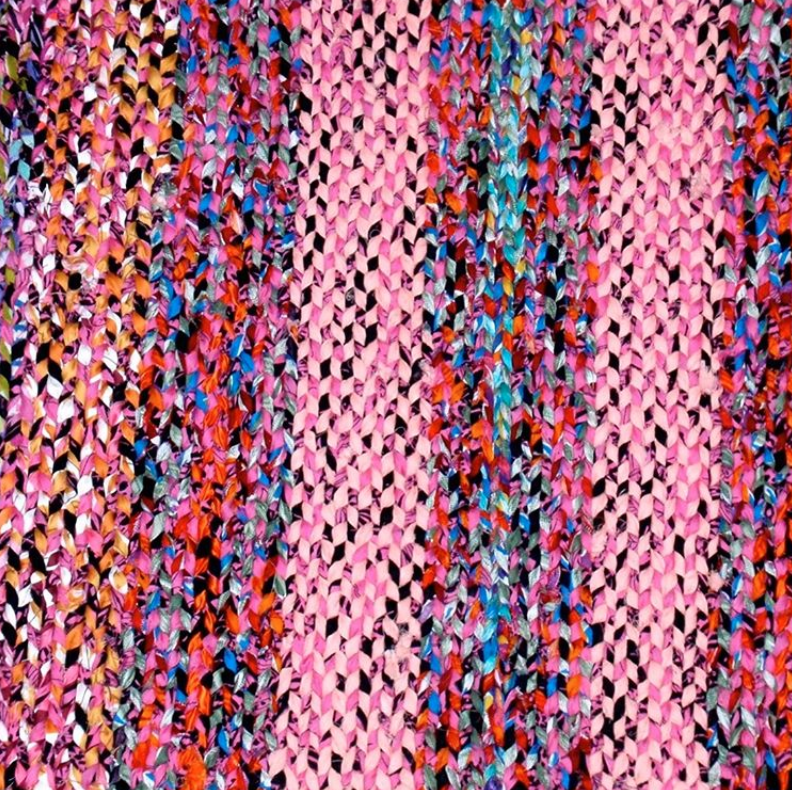
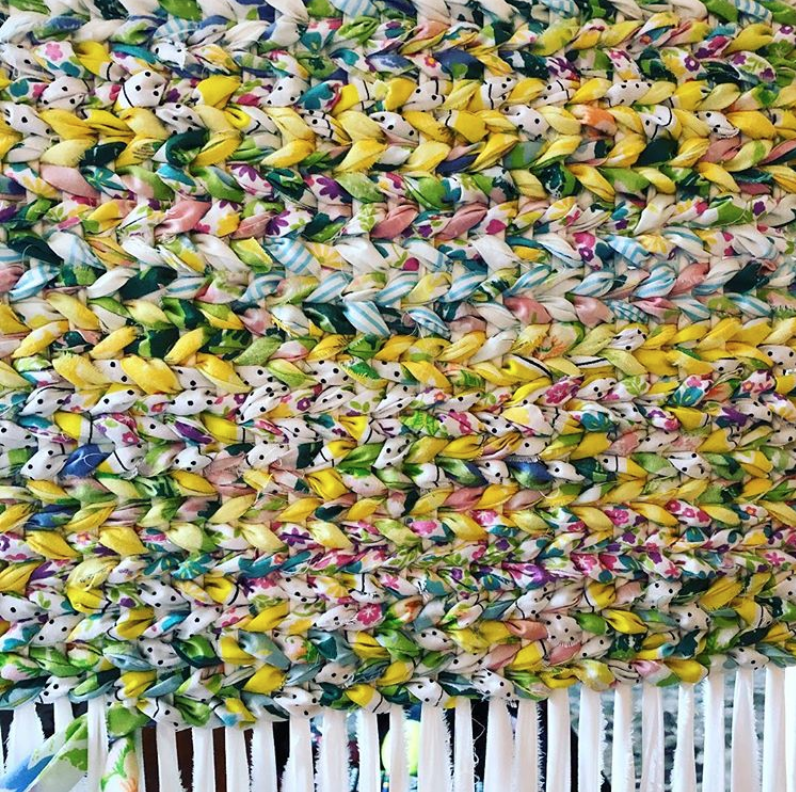
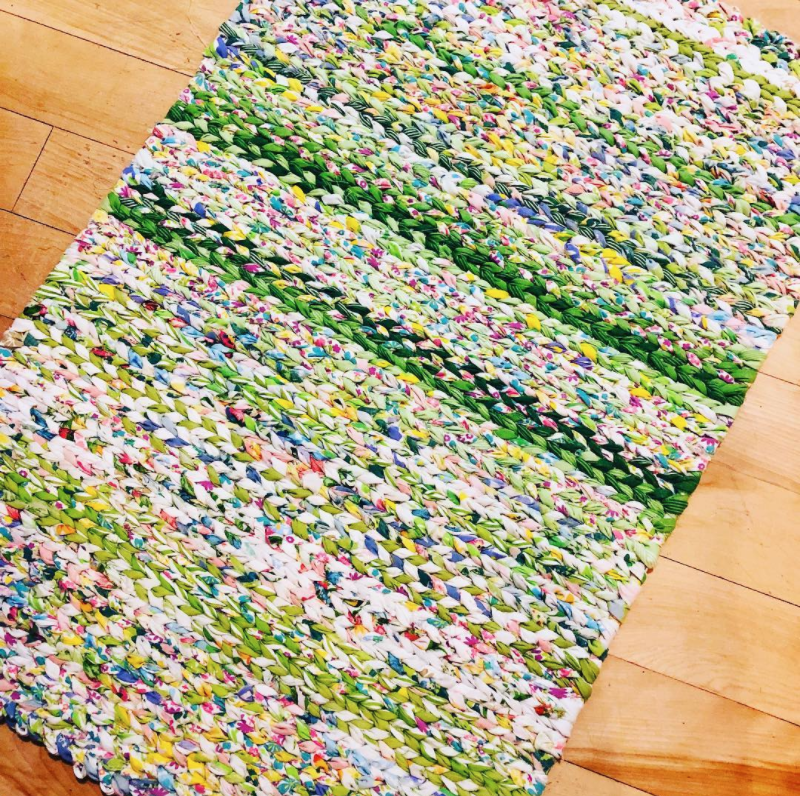
Experienced twiners can even build complex designs and vary the shapes of the rugs themselves, which means the sky’s the limit in terms of what you can achieve given a bit of practice and ingenuity!
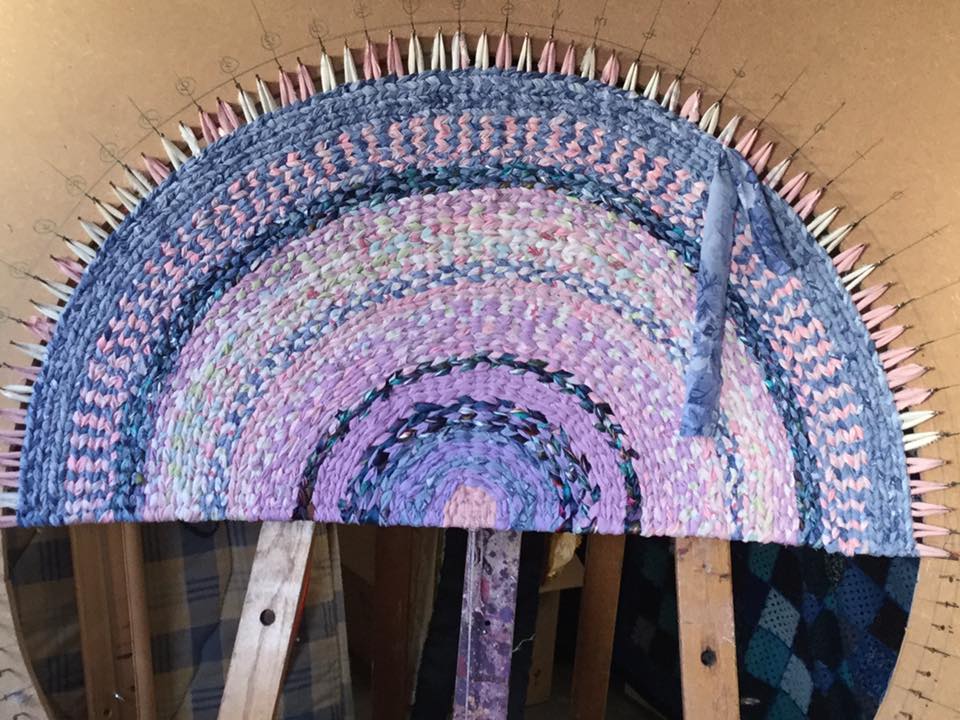
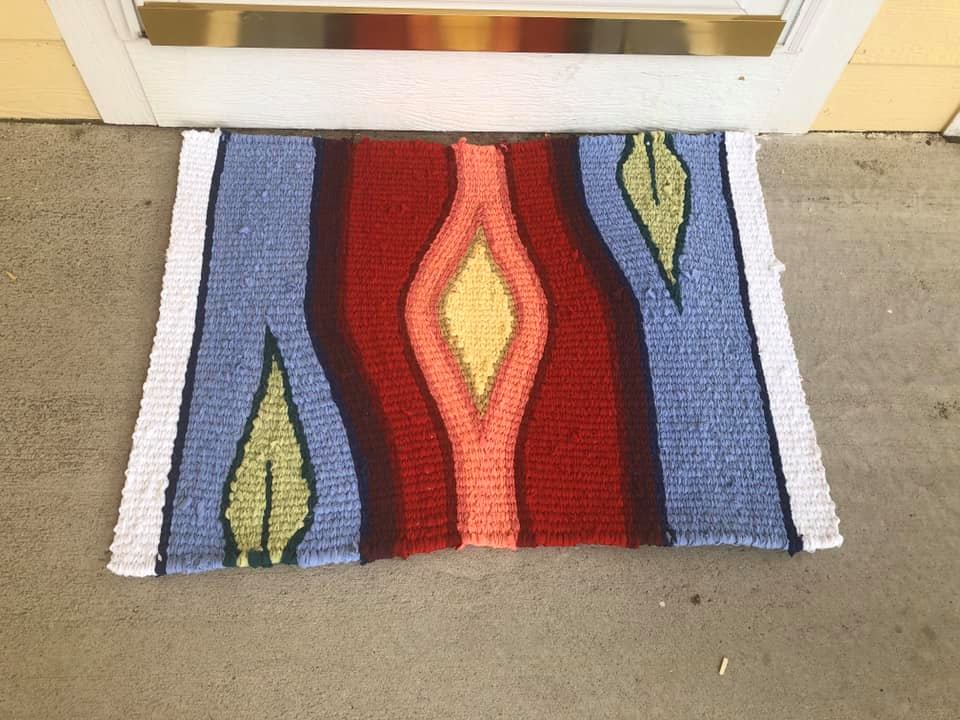
So, that’s what twined rugs look like, but what do we know about the technique?
A Little Bit About Twining:
I’m no twining historian, but from what I’ve read, there’s evidence that the process of twining is even older than weaving itself, which is pretty mind-boggling. In fact, experts estimate that the technique dates back as far as twenty eight thousand years ago! So, I guess you could say that it’s pretty old.
Twining developed independently in cultures all over the world as a natural way of assembling flexible materials. It started out mainly as a form of basketry, but has since branched out into many other forms, including rug making. Understandably, twined rugs only became more commonplace when commercial fabric become more widely available (as with our British rag rugs).
Twining is often mistaken for simple weaving, but the process is very distinctly different. Twining involves twisting two flexible strands (named wefts) around each other to enclose vertical strands (called warps). It’s the use of two wefts and twisting them together to enclose the warps that mainly distinguishes twining from normal weaving.
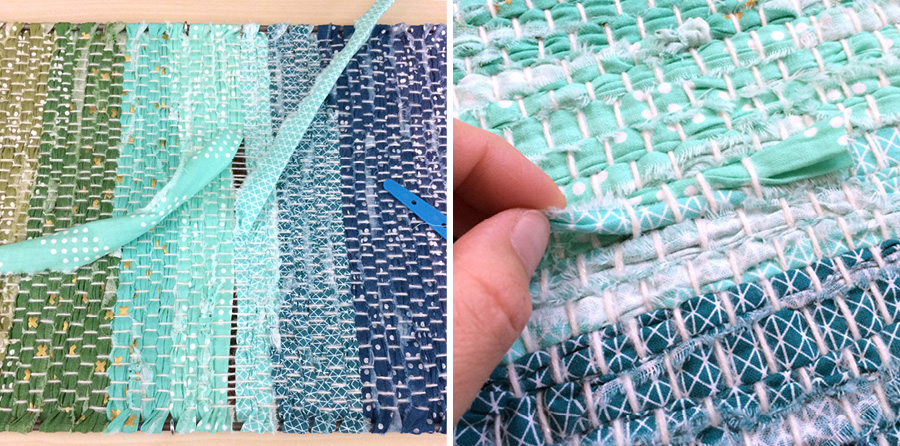
Ragged Life Rug Twining Workshops:
As I’ve spent the past few months pretty much solely experimenting with rug twining, it would seem a shame not to pass on that knowledge to others. So, from October 2020 onwards, I will be running rug twining workshops at our Ragged Life HQ near Hitchin, Hertfordshire.
What is the rug twining workshop format?
Our twined rug workshops will run 10:30-16:00 and are designed for complete twining beginners to learn the basics of how to make twined rugs, whilst making a colourful placemat. Classes will be capped at a maximum of 6 students per class to ensure top-notch teaching and social distancing.
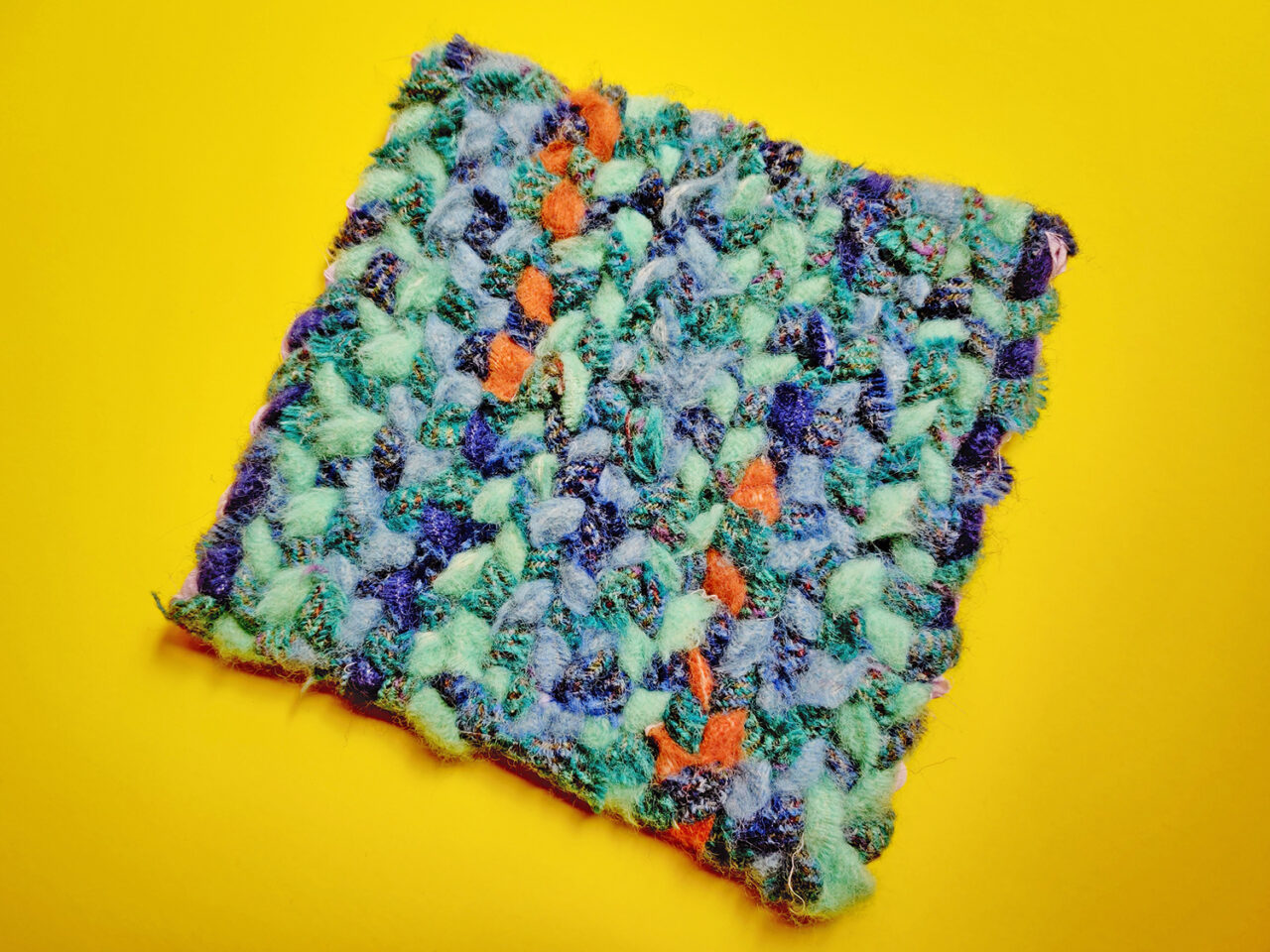
What will I learn?
In our Ragged Life Rug Twining Workshops, you will make a personalised twined placemat, whilst learning:
- Basic twining terminology and what equipment is needed
- Techniques for warping the loom
- Selecting and preparing materials
- Twining techniques, including countered and same-pitch twining, regular and alternate turns.
- How to design and make patterns in twined projects
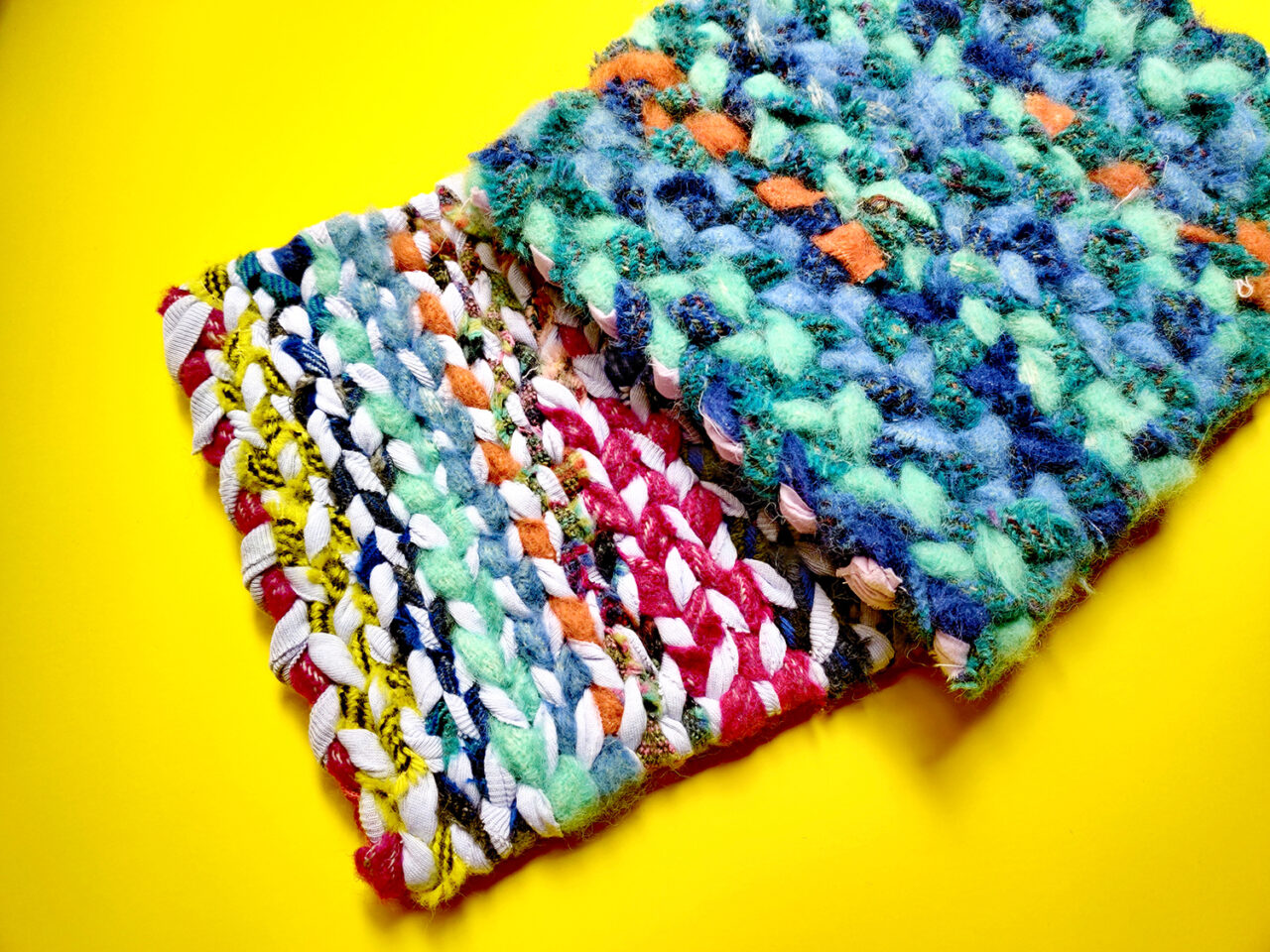
What is included in the workshop?
On the day, you will be provided with all the materials you need, including an extensive choice of fabrics to play around with. We’ll keep you topped up with refreshments and biscuits throughout the day, but please do bring along a packed lunch as the workshop runs all day.
After the class, if you would like to continue twining at home, we will have looms and materials available for sale in case you’ve caught the twining bug ☺️
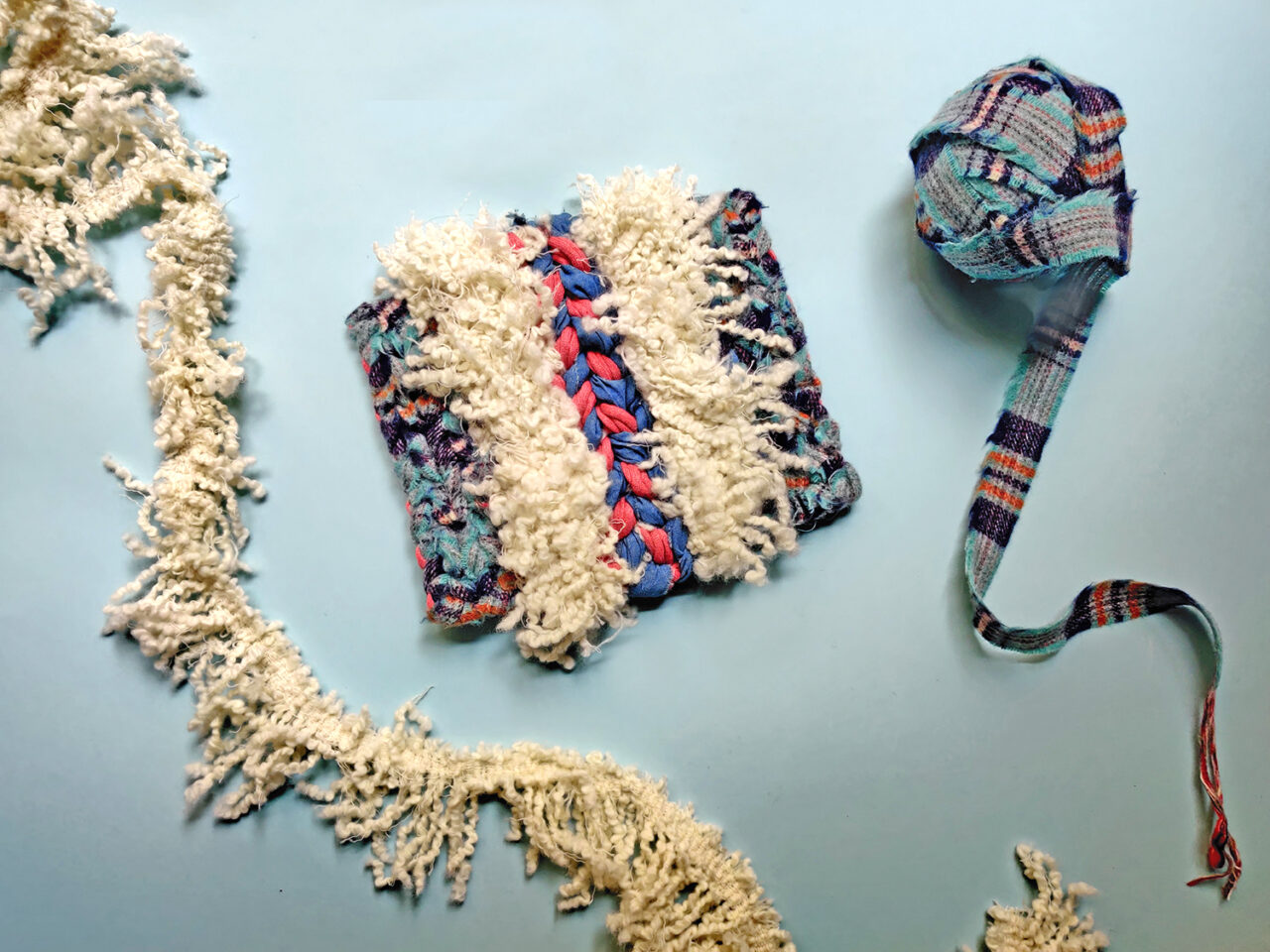
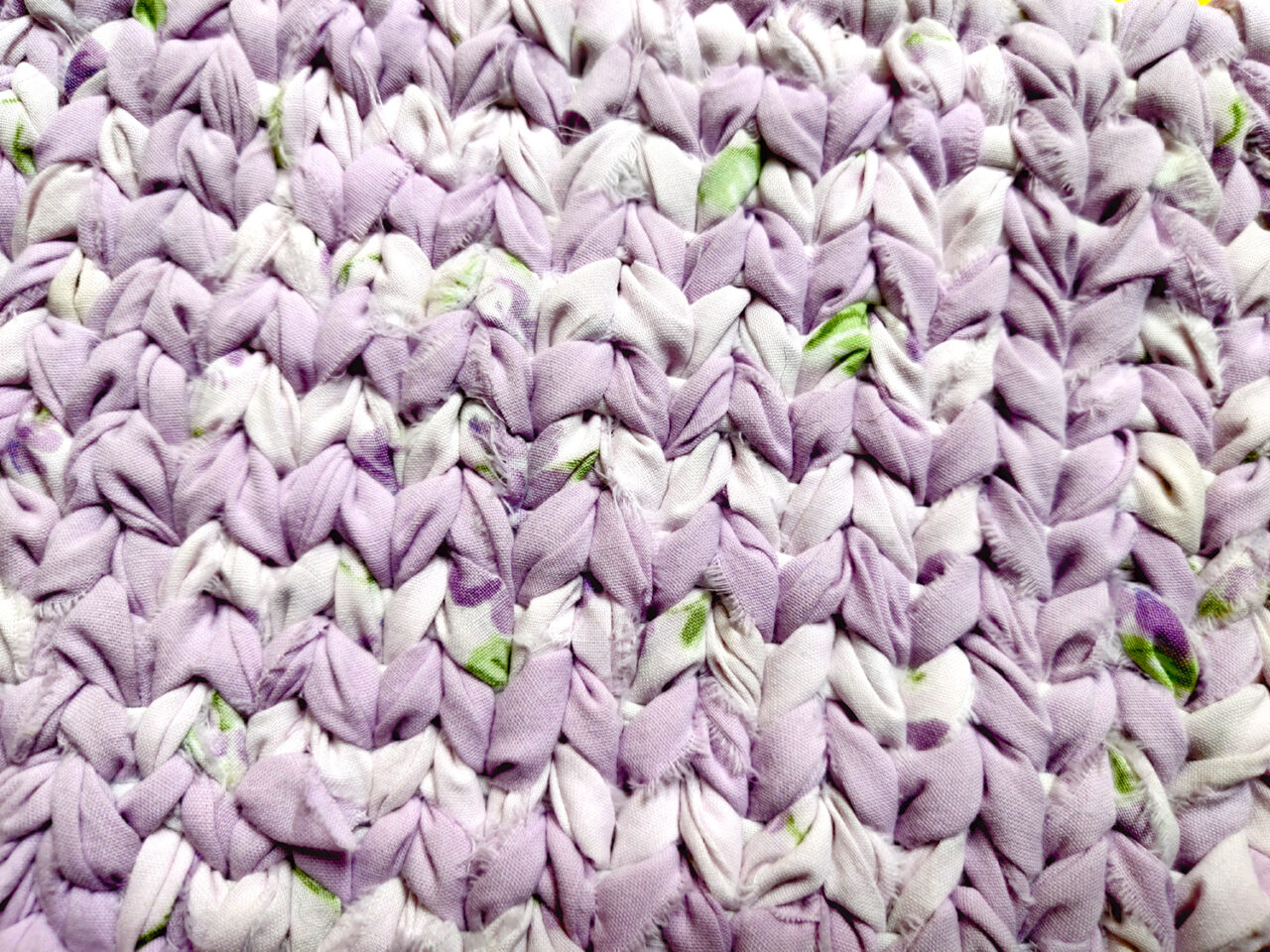
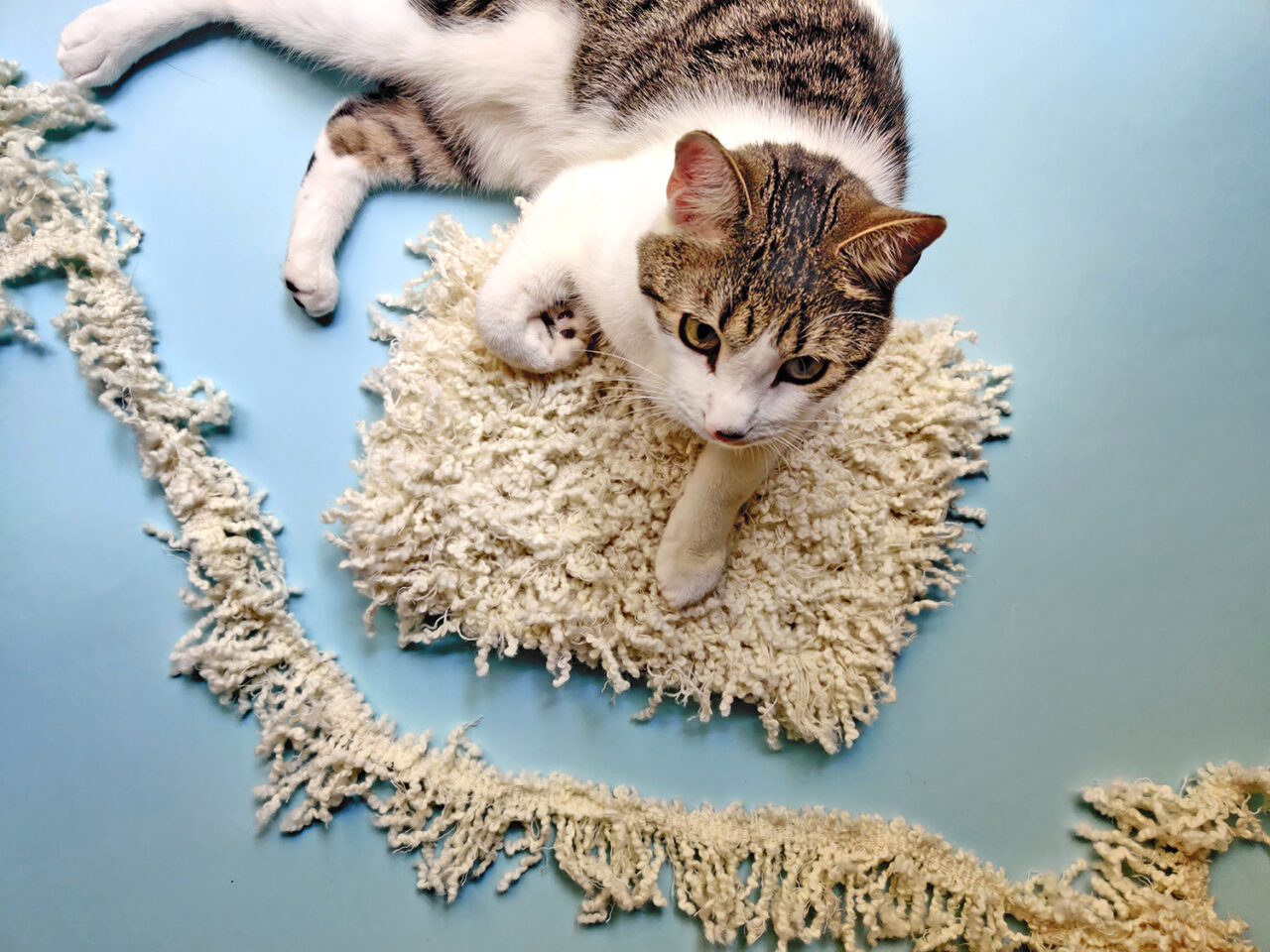
How do I book a class?
Click here to browse workshop dates and book onto a class or email hello@raggedlife.com for more details.
Twining workshops FAQs:
Q1: Who are these workshops suitable for?
EVERYONE! Our twining rag rug workshops are suitable for beginners and experienced crafters alike. Whether you’re a rag rug expert or beginner this technique is all new. We will start with the very basics to teach you all you need to know to make a beautiful twined rag rug.
Q2: Is there parking at your Ragged Life Herts HQ?
Fortunately, there is plenty of parking available at our Herts HQ, so no worries there.
Q3: What Covid-19 Precautions are in place?
To ensure your safety during the pandemic, we will be:
- Capping our twining classes at a maximum of six participants per class.
- Supplying hand sanitiser for all workshop participants.
- Ensuring social distancing.
- Disinfecting all tools / materials before and after classes.
Please also note that given the uncertainty at the moment, we are being extremely flexible with our workshop bookings policy in case you are unable to attend a class that you have booked onto.
Thanks so much for reading and we can’t wait to see you at a Ragged Life rug twining workshop soon! 😊
If you’d like to be kept informed on all things rag rug then why not join our Rag Rug Community on Facebook, follow us on Instagram or join our fortnightly newsletter here.
OR CONNECT WITH US ON SOCIAL MEDIA AT:
Instagram: https://www.instagram.com/raggedlife/
Facebook: https://www.facebook.com/raggedliferagrugs/
Pinterest: https://www.pinterest.co.uk/raggedlife/
Twitter: https://twitter.com/raggedlife
Elspeth x
[…] rug techniques featured in my second book “Rag Rug Techniques for Beginners” is called twining. It creates a beautiful, tightly woven style of rag rug that is a joy to behold (and to walk […]
[…] of rag rug making (shaggy, short shaggy and loopy), as well as peg loom weaving, locker hooking, twining and ribbon weaving. Other clever crafters even use it for extreme knitting, crochet, edging and […]
[…] year, we experimented with a new form of rag rug making that is popular in the States called “twining”. Well, I found it quite difficult to explain how it is done, so I’ve decided to create a […]
[…] creative? It could also be used for crochet, knitting, weaving etc… I’m currently twining a rag rug with […]
[…] this month, we announced that for the first time ever, we’ll be running Twined Rag Rug Workshops here in […]